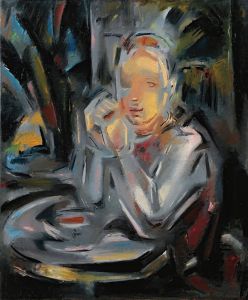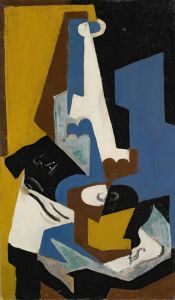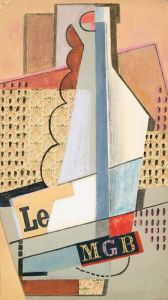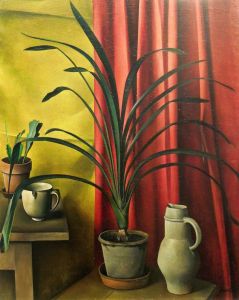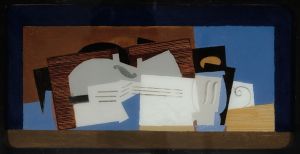
Nature Morte Cubiste
A hand-painted replica of María Blanchard’s masterpiece Nature Morte Cubiste, meticulously crafted by professional artists to capture the true essence of the original. Each piece is created with museum-quality canvas and rare mineral pigments, carefully painted by experienced artists with delicate brushstrokes and rich, layered colors to perfectly recreate the texture of the original artwork. Unlike machine-printed reproductions, this hand-painted version brings the painting to life, infused with the artist’s emotions and skill in every stroke. Whether for personal collection or home decoration, it instantly elevates the artistic atmosphere of any space.
María Blanchard was a prominent Spanish painter associated with the Cubist movement. One of her notable works is "Nature Morte Cubiste" (Cubist Still Life), which exemplifies her contribution to the Cubist style. Born on March 6, 1881, in Santander, Spain, Blanchard moved to Paris in 1909, where she became deeply involved in the avant-garde art scene. Her work during this period was heavily influenced by Cubism, a revolutionary art movement that emerged in the early 20th century, characterized by fragmented and abstracted forms.
"Nature Morte Cubiste" is a still life painting that reflects the core principles of Cubism. The painting deconstructs objects into geometric shapes and presents them from multiple perspectives within a single plane. This technique challenges traditional notions of perspective and representation, offering a more dynamic and complex view of reality.
Blanchard's approach to Cubism was unique in that she often infused her compositions with a sense of emotional depth and personal expression. While many Cubist works can appear detached and analytical, Blanchard's paintings frequently convey a more intimate and human quality. This is evident in "Nature Morte Cubiste," where the arrangement of objects and the interplay of light and shadow create a sense of harmony and balance.
The painting features a variety of everyday objects, such as bottles, fruits, and musical instruments, which are common subjects in Cubist still lifes. These items are rendered in a fragmented manner, with overlapping planes and intersecting lines that create a sense of movement and rhythm. The color palette is typically subdued, with earthy tones and muted hues that enhance the structural qualities of the composition.
Blanchard's mastery of Cubist techniques is evident in her ability to manipulate form and space to create a cohesive and visually engaging work. Her use of chiaroscuro, the contrast between light and dark, adds depth and dimension to the painting, drawing the viewer's eye into the complex interplay of shapes and forms.
"Nature Morte Cubiste" is a testament to Blanchard's skill and innovation as an artist. It reflects her deep understanding of Cubist principles and her ability to adapt them to her own artistic vision. Throughout her career, Blanchard remained committed to exploring new ways of seeing and representing the world, and her contributions to Cubism have earned her a place among the most important artists of her time.
María Blanchard's work, including "Nature Morte Cubiste," continues to be celebrated for its technical proficiency and emotional resonance. Her paintings are held in high regard by art historians and collectors alike, and they remain an important part of the legacy of Cubism. Blanchard's unique perspective and artistic achievements have ensured that her work remains influential and relevant in the study of modern art.





